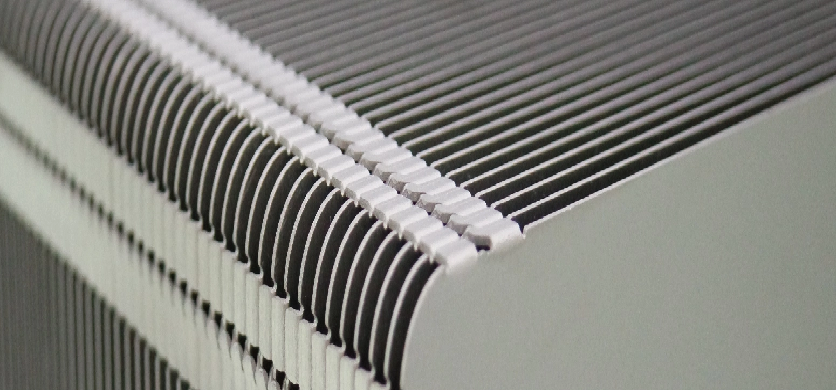In the automotive industry, efficient heat transfer is crucial for ensuring the optimal performance and longevity of vehicles. As engines become more powerful and vehicles increasingly rely on electronic systems, managing thermal loads effectively is more important than ever. Advanced heat exchanger technologies, such as microchannel heat exchangers, are at the forefront of these efforts, providing superior heat transfer capabilities that are essential for modern automotive applications. To learn more about these innovations, visit https://www.kaltra.com/microchannel-heat-exchangers.
The Role of Heat Exchangers in Automotive Applications
Heat exchangers are critical components in various automotive systems, including engine cooling, air conditioning, and battery thermal management. Their primary function is to transfer heat between different fluids or from fluids to the air, maintaining the desired temperature range for optimal system performance. Inefficient heat transfer can lead to overheating, reduced efficiency, and potential damage to vehicle components.
Benefits of Microchannel Heat Exchangers
Microchannel heat exchangers offer several advantages over traditional heat exchangers, making them particularly well-suited for automotive applications. These benefits include enhanced heat transfer efficiency, compact design, and reduced weight.
- Enhanced Heat Transfer Efficiency: Microchannel heat exchangers are designed with numerous small, parallel channels that significantly increase the surface area available for heat transfer. This design allows for more effective heat dissipation, which is crucial in automotive applications where maintaining optimal temperatures is vital for performance and safety. The increased surface area ensures that heat is transferred more efficiently, preventing overheating and ensuring consistent performance.
- Compact and Lightweight Design: Space and weight are critical considerations in automotive design. Microchannel heat exchangers are much more compact and lightweight compared to traditional fin-and-tube exchangers. This compactness allows for greater flexibility in system design and integration, making it easier to incorporate these heat exchangers into various parts of the vehicle without compromising on performance. The reduced weight also contributes to overall vehicle efficiency, as lighter components help improve fuel economy and reduce emissions.
- Durability and Reliability: Automotive components must withstand harsh operating conditions, including extreme temperatures, vibrations, and exposure to various chemicals. Microchannel heat exchangers are typically made from robust materials such as aluminum, which offers excellent resistance to corrosion and mechanical stress. This durability ensures a longer lifespan for the heat exchangers, reducing the need for frequent replacements and maintenance, and enhancing the reliability of automotive systems.
Applications of Microchannel Heat Exchangers in Automotive Systems
Microchannel heat exchangers are versatile and can be used in a wide range of automotive applications. Here are some key areas where they are making a significant impact:
- Engine Cooling: Efficient engine cooling is essential for maintaining engine performance and preventing overheating. Microchannel heat exchangers provide superior heat dissipation, ensuring that engine temperatures remain within the optimal range. This helps improve fuel efficiency, reduce emissions, and extend the lifespan of engine components.
- Air Conditioning Systems: Automotive air conditioning systems require efficient heat exchangers to maintain comfortable cabin temperatures. Microchannel heat exchangers are ideal for these systems due to their compact design and high efficiency. They enable rapid cooling of the refrigerant, ensuring that the air conditioning system operates effectively even in hot climates.
- Battery Thermal Management: As electric and hybrid vehicles become more prevalent, effective battery thermal management is crucial for performance and safety. Microchannel heat exchangers help maintain the optimal temperature range for battery packs, preventing overheating and ensuring efficient operation. This is especially important for extending the range and lifespan of electric vehicle batteries.
- Transmission Cooling: Transmissions generate significant heat during operation, and effective cooling is necessary to maintain performance and prevent damage. Microchannel heat exchangers provide efficient heat transfer for transmission cooling systems, ensuring that transmission fluid temperatures remain within safe limits.
Conclusion
The adoption of advanced heat exchanger technologies, such as microchannel heat exchangers, is transforming thermal management in the automotive industry. These innovative solutions offer superior heat transfer efficiency, compact and lightweight design, and enhanced durability, making them ideal for a wide range of automotive applications. By improving heat dissipation and maintaining optimal temperatures, microchannel heat exchangers help enhance vehicle performance, efficiency, and reliability. For more information on these cutting-edge solutions, visit Kaltra’s microchannel heat exchangers.
As the automotive industry continues to evolve, the importance of efficient thermal management will only increase. Advanced heat exchangers will play a crucial role in meeting the demands of modern vehicles, ensuring they perform optimally and sustainably.


